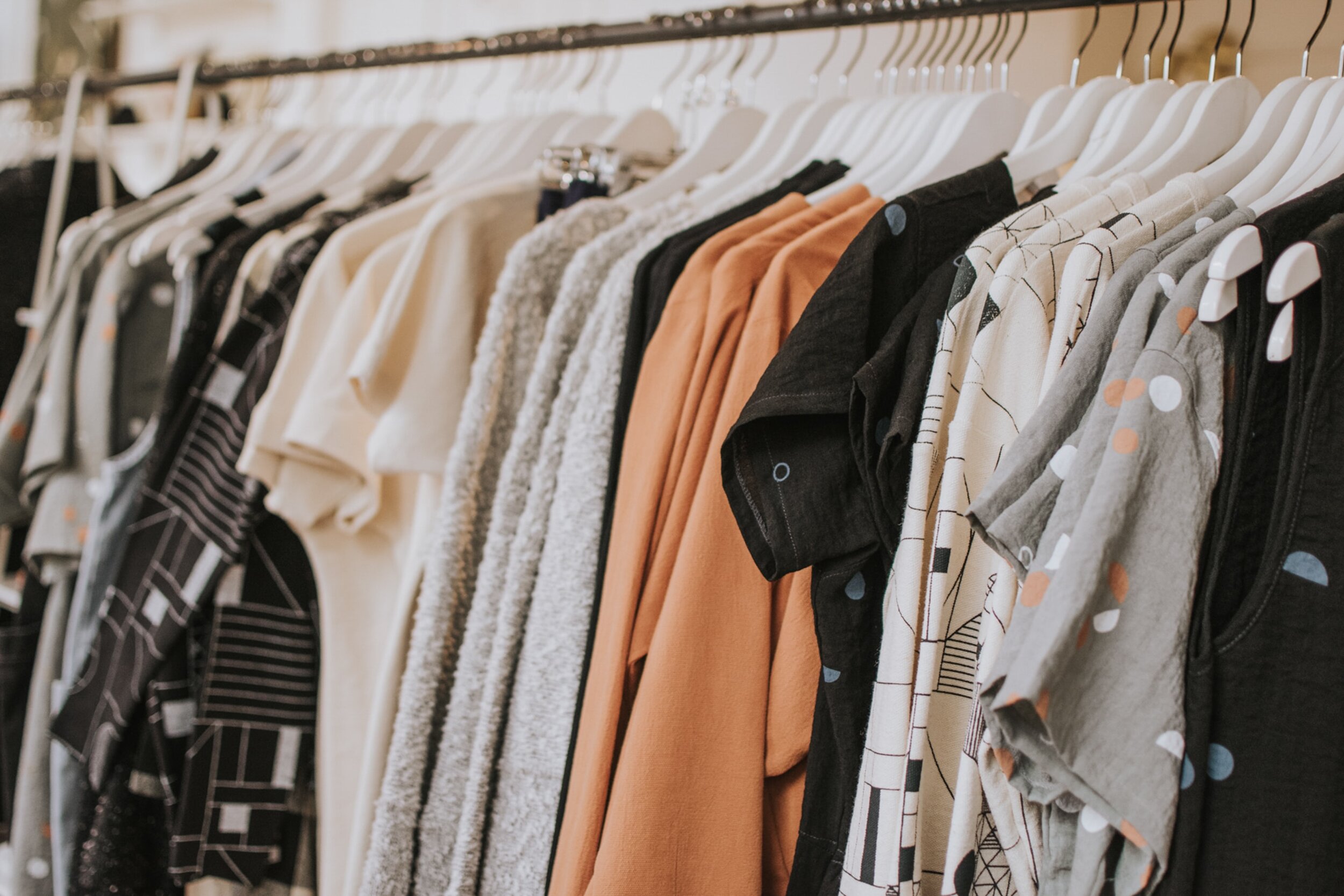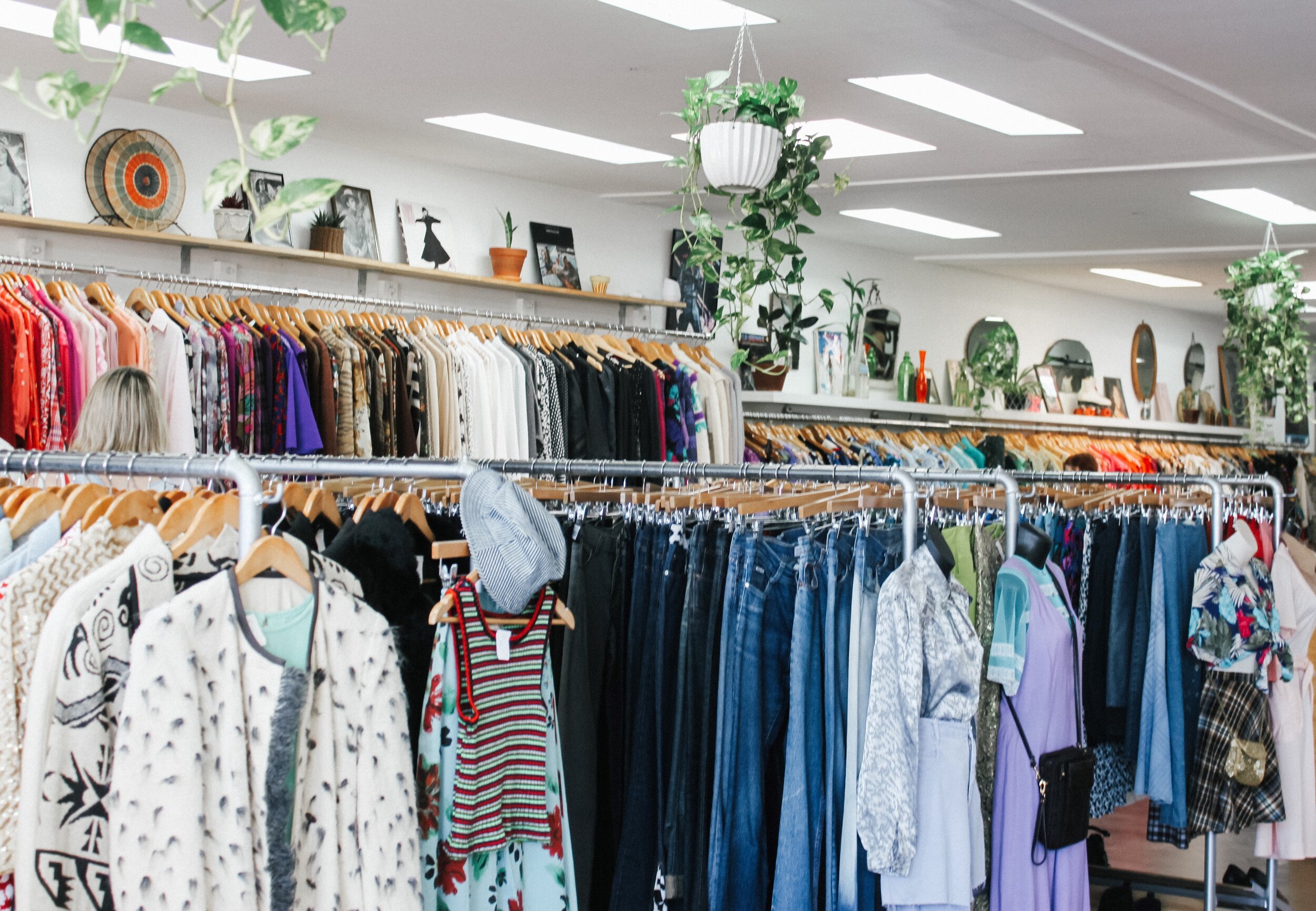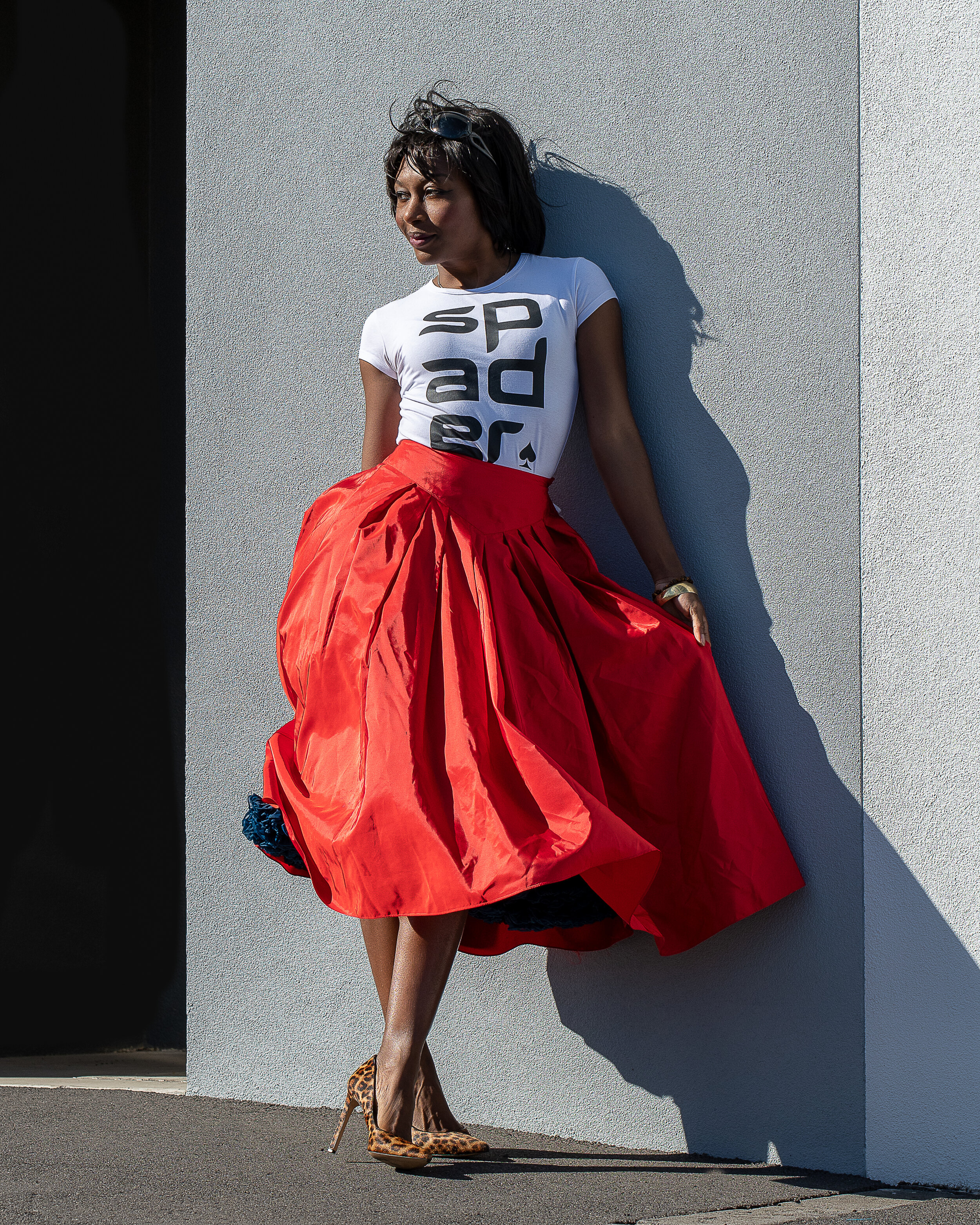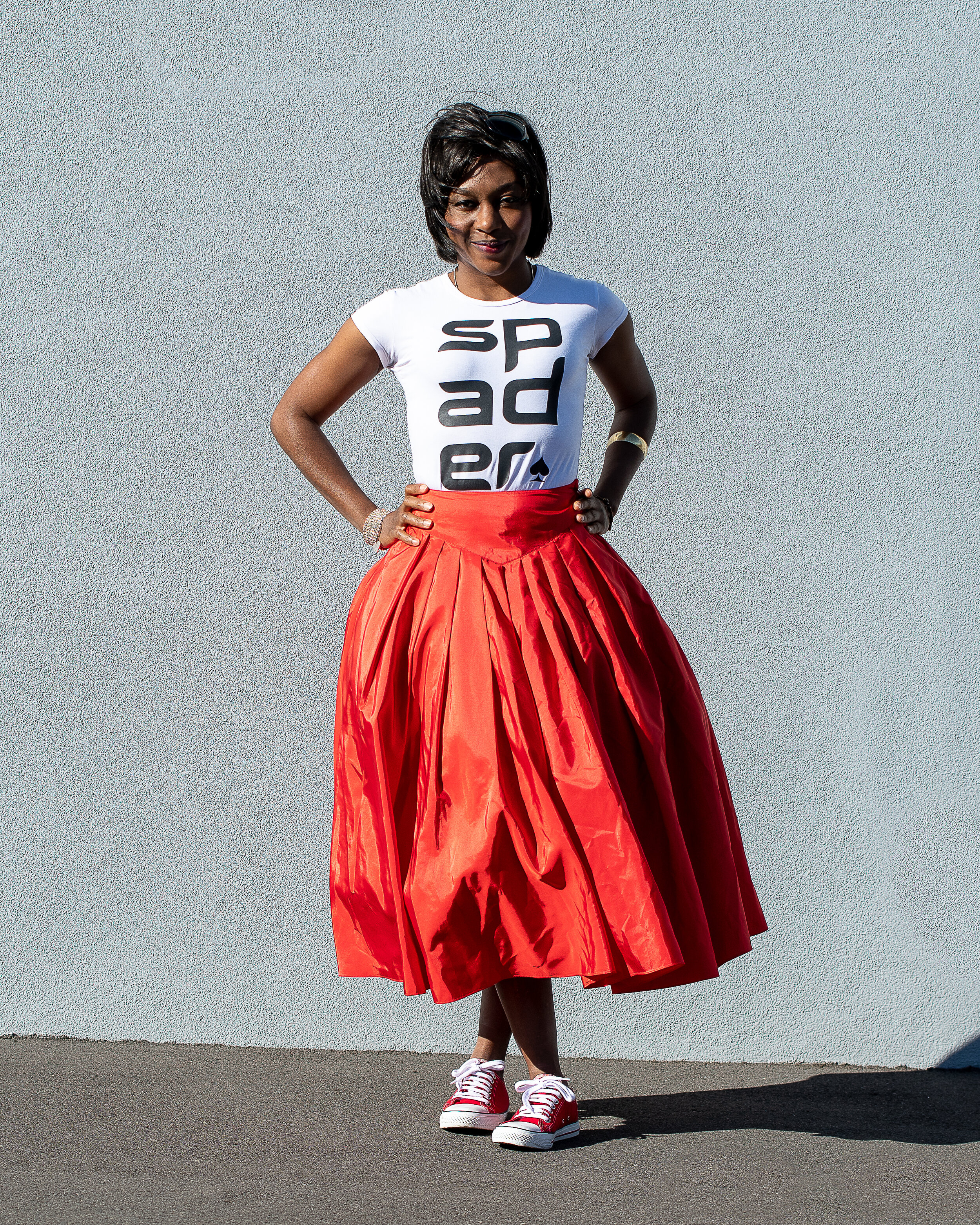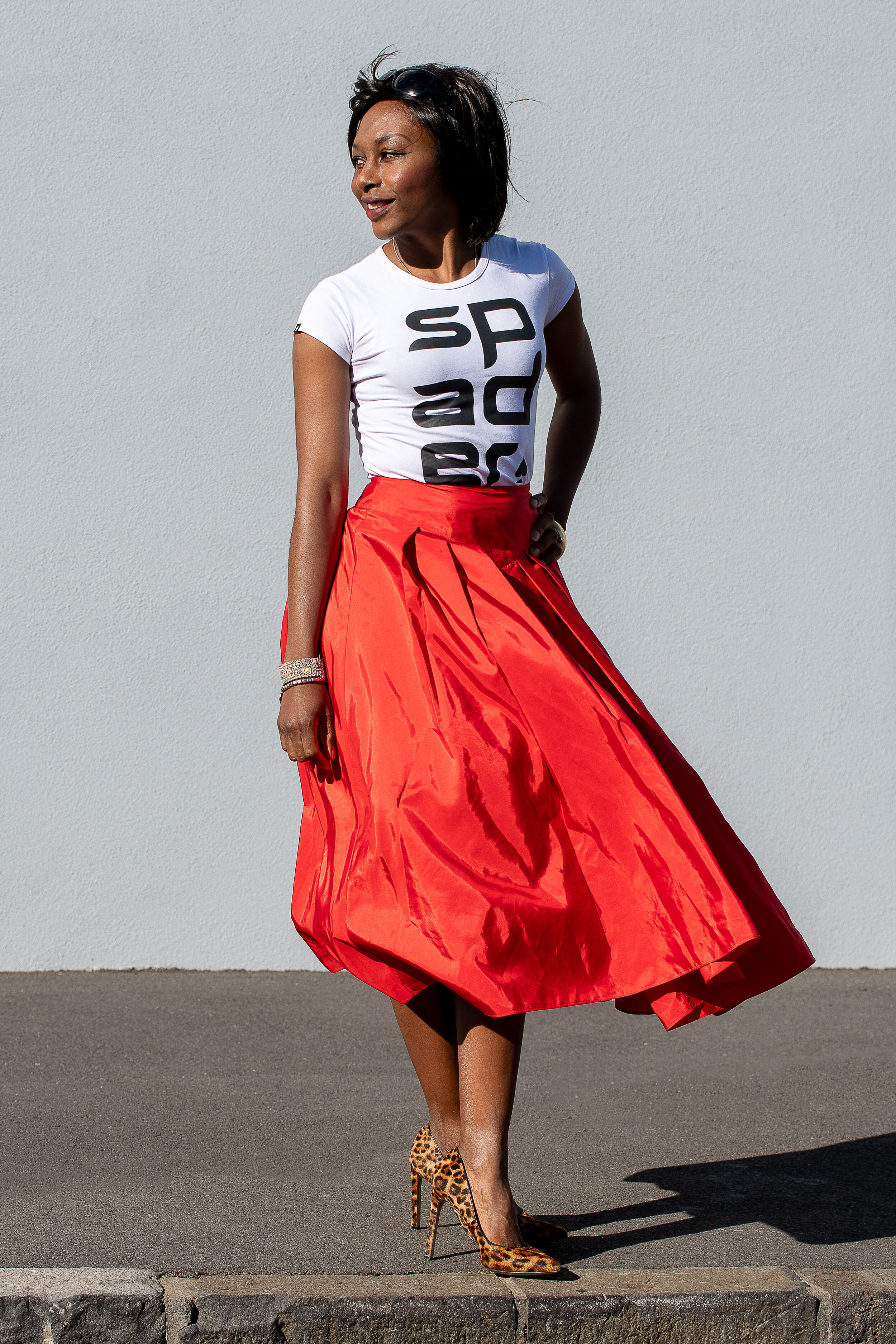My Dorothy skirt.
French fashion designer, Yves Saint Laurent once said, “Fashion fades, style is eternal.” This means your personal preference and connection to your clothing is everything when it comes to your style. This feeling of connection is reason why I had to have this skirt the moment I first laid eyes on it! I got it from a vintage-style boutique that hand-makes all their clothes locally here in Oz (Australia).
The Wizard of Oz
It’s one of the most phenomenal feelings when you feel like a garment or outfit really gets you. The vision of this skirt teleports me to old, happy memories of watching The Wizard of Oz (1939) repeatedly with my mom and brothers. I call it my Dorothy skirt because the blue gingham reminds me of Dorothy's blue gingham dress. And the vibrant colours are as radiant as Munchkin land in Technicolor! The skirt just oozes torrents of playfulness and an unapologetic sense of schmaltz with its wild, fruits of many colours!
Through happenstance, I've come to realise that pieces like this not only give me so much joy, but they make everyone else smile too. They can be such wonderful conversation starters. For example, it can be an opportunity to talk about slow fashion, locally made clothing, the need to support small businesses or even your favourite classic film!
Crafting your personal style…
Whether your style leans more towards neutral or mellow colours, classic patterns, conservative, edgy, dramatic, creative, vintage or even being exquisitely colourful like mine, your happiness and self-alignment will gain a massive boost when you wear pieces that are truly of your personal preference. This means ignoring the external and internal voices that say, “you can’t wear that”. The question is, does it represent who you are on the inside?
When it comes to choosing what goes in your wardrobe, beware of engaging in groupthink, as it can take you down a path of joining the toxic bandwagons that may cause you to overconsume or even delay your personal growth. This is truly about your individuality, your humanity and even your artistry. Now might be the right moment to look within at what makes you feel a sense of connection, what’s appropriate for you or what gives you joy in order to establish a precedent for your wardrobe and other areas of your life. This is a track that can take self-acceptance and confidence to supersonic levels.
It’s also a well-executed concept amongst those who have been shopping preloved most of their lives. If you’re unsure of what your perfect style is, it helps to learn from people who have mastered the art of ethical fashion, minimalism, vegan fashion and the sustainable lifestyle.
Back to Oz
I watched the 1939 classic so many times when I was younger that I believe it became deeply rooted in my subconscious. It might possibly be the reason why I ended up in this merry land of Oz (Australia) as an adult. Before I came here, indeed I was looking for a place that felt like home (kind of like Dorothy). Moving across the world alone took a ton of courage (like the lion), I had to learn to have an open heart (like the tin man) and of course I had to work smart (with a brain like the lion). I've found these things and blossomed here in the land of Oz. And I also realised I had these resources within all along. I just needed to go through some tough experiences in order to change my perception of myself so that I could see it. What a journey its been!
This is why this skirt is so symbolic and holds such powerful meaning for me. I cherish it and I’ll keep it for a very long time to come. It’s my testament to why fashion fades but style is eternal. Fashion trends are short and fleeting, whilst style has deeper meaning and purpose in your life. Style is something that is likely to stay with you for many years, if not all your life. The way the Wizard of Oz has stayed with me.
With the stories, personal history and memories that make us feel a connection with our clothing, it can be an avenue to less consumption whilst enriching our lives. This connection is good for our wellbeing and the environment. Clothing should not be disposable. And the more we heed these connections, our garments become more than just trends or practical items that get thrown out after minimal use. These connections bring a sense of long-term familiarity and comfort almost like an old friend or family. If we aim to foster connection with our wardrobes, ecologically it would translate to a healthier clothing culture. And very likely an overall reduction in textile waste.
STYLING DOROTHY
I wore my Dorothy skirt with a periwinkle retro-style preloved t-shirt I found at a charity thrift store. I’ve added my staple tan waist belt. Completed the look with a pair of mint-coloured sneakers.
In the spirit of pattern clash, I've also paired Dorothy with my preloved velvet zebra-print coat.
Pattern clash: velvet zebra-print coat over periwinkle t-shirt and Dorothy skirt of many colours.
Outfit sourced from:
Periwinkle T-shirt - Salvation Army Op Shop
Dorothy Skirt - Gigi’s Fairy Fashion
Tan Belt - Noffs Op Shop
Mint Sneakers - Red Cross Op Shop
Velvet Zebra-Print Coat - Salvation Army Op Shop
♥ Nina Gbor
Instagram: @eco.styles



